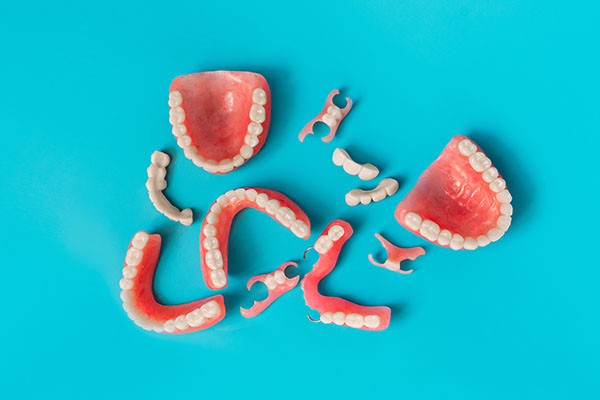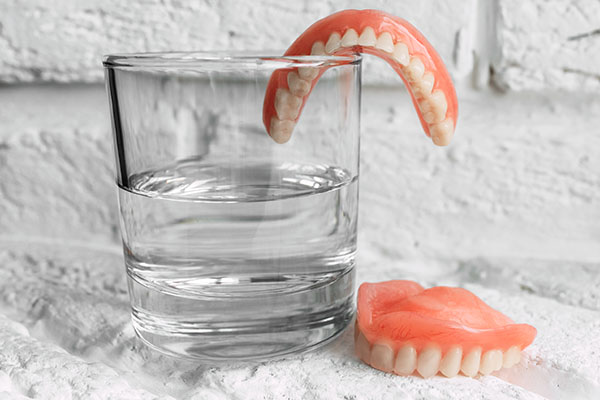General Dentistry: Are TMD/TMJ the Same Issue?

When talking with family and friends about jaw pain, you have probably heard the terms TMD and TMJ. The terms may have even been used interchangeably. As similar as the terms sound, it is not surprising that they are often confused. With a little bit of background about what the terms stand for, however, it is not hard to understand the difference.
TMJ is a joint
TMJ is short for temporomandibular joint, which is the joint where the jawbone connects to the right and left side of the skull. More specifically, the jawbone connects to the temporal bone, which is one of the bones that makes up the skull. The jawbone joint is complex — in addition to hinge movements, it supports motion from side to side, forward and backward. This wide range of motion requires that a disc on each end of the jawbone moves between two indentations, or cavities, in the temporal bone. A healthy TMJ moves smoothly from one position to another as a person breaths, speaks, chews and swallows.
TMD is a joint disorder
TMD stands for temporomandibular joint dysfunction. This includes any disease or disorder of the jaw joint. As with any complex joint, there are many possible problems that can negatively affect its function. Some causes may be short-term, but frequently the problem that is causing joint dysfunction will worsen over time if it is left untreated. Considering how important jaw function is to quality of life, it is wise to seek professional help early instead of waiting until the problem becomes unbearable.
Causes
Any disturbance in the joint, soft tissues or bone can cause TMD. Such disturbances can be chronic, such as muscles and ligaments failing to keep the jawbone aligned properly, or acute, such as trauma to the joint or jaw. Habitually clenching or grinding the teeth can lead to bruising or swelling in the joint, which also interferes with proper function.
Signs and symptoms
Just as there are many possible causes of TMD, the signs and symptoms may differ depending on how severe the disease is and its cause. A few of the common indicators are the following:
- A grinding or popping sound when chewing or opening the mouth
- Pain in the joint, jaw or ear (especially when opening or closing the mouth)
- Joint locking that prevents the mouth from opening or closing
- An inability to close teeth together into a bite that feels natural
- Pain or difficulty when chewing
- Facial aching
Conclusion
In the U.S. Department of Health and Human Services 2017 publication “TMJ Disorders,” they estimate that more than 10 million people in the United States have TMD, making it a common disease. People who are inexperienced with the associated problems may be tempted to brush it off as a small thing, but jaw problems are not to be taken lightly. With as vital as the TMJ is for daily life and socialization, people who suffer with severe pain have a difficult time functioning.
Thankfully, there are treatments today that can lessen and even eliminate the pain and other symptoms of jaw joint disorders. One of the best ways to minimize the risk of severe problems in the future is to seek help early when the problem feels more like an annoyance than a disorder.
Request an appointment here: https://www.leedentistryoxford.com or call Lee Family and Cosmetic Dentistry at (662) 546-1143 for an appointment in our Oxford office.
Check out what others are saying about our services on Yelp: Read our Yelp reviews.
Recent Posts
It might take some time adjusting to your new smile and the proper denture care you should be doing. This is completely normal, but with a bit of practice and some education, you’ll begin to feel like you don’t even have dentures, and everything will be second nature. With that comfort, some people begin to…
Denture care is essential for dental health. How often do you think about your dentures? There's a good chance it's not as often as you should. Your dentures are part of your mouth and one of the most important parts because they can impact how your smile looks and feels.Denture care is vital for dental…
The best cleaning solution for denture care varies from person to person. Using a toothbrush and water is not enough to clean dentures completely. This can lead to plaque buildup on your dentures, especially in the crevices of the mouth. To avoid this problem, dentists recommend using dental solutions specifically designed to clean dentures. Denture…
Although there are often no painful symptoms of gum disease in the early stages, it is crucial to treat gum disease as soon as it is detected. Otherwise, the disease could worsen or lead to more severe oral health concerns that require extensive treatment to address properly.Understanding the dangers of gum disease can provide the…


